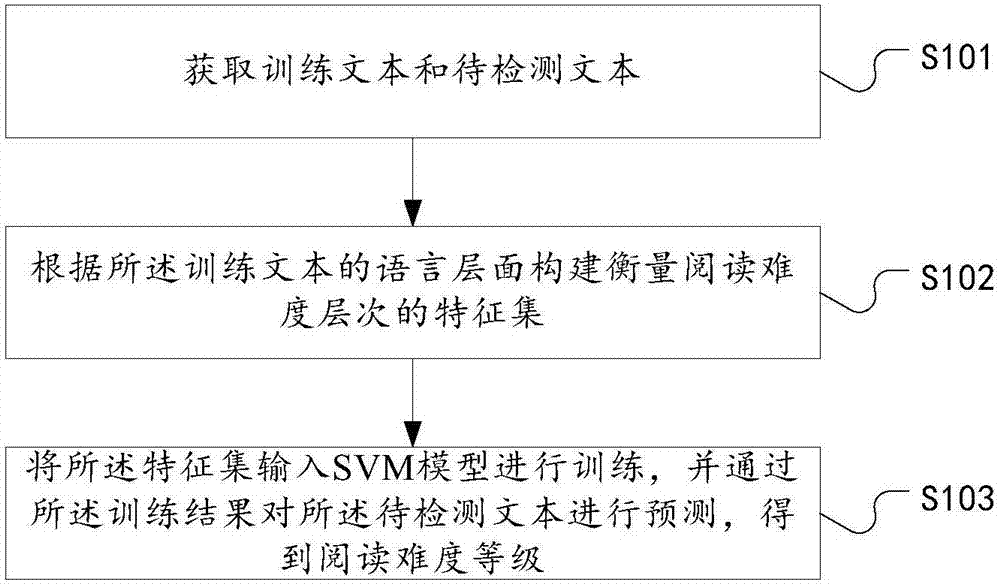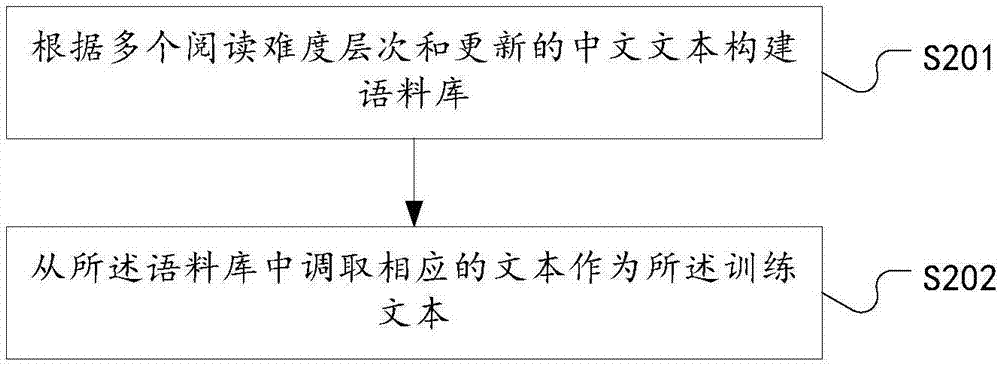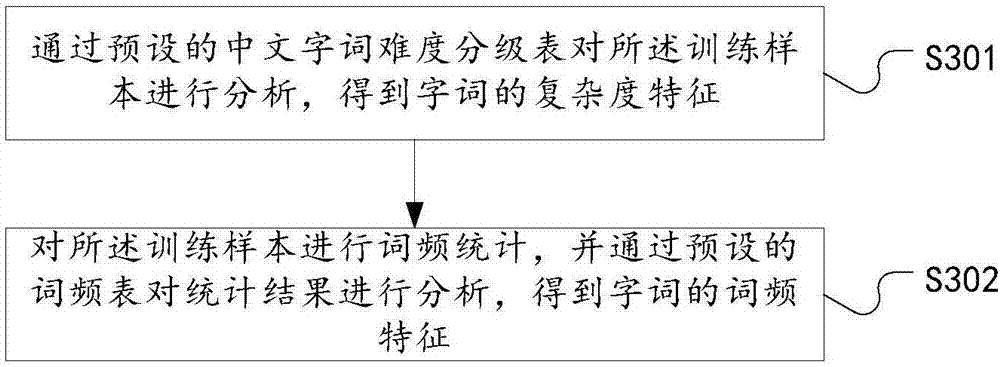Chinese reading difficulty grading method and system based on machine learning
A reading difficulty and machine learning technology, applied in the field of artificial intelligence, can solve the problems of not considering the characteristics of language age changes, unable to accurately reflect the structural nature, and language characteristics not enough to reflect the reading comprehension process, etc., and achieve accurate reading difficulty level classification. Effect
- Summary
- Abstract
- Description
- Claims
- Application Information
AI Technical Summary
Problems solved by technology
Method used
Image
Examples
Embodiment Construction
[0065] In order to enable those skilled in the art to better understand the technical solutions of the present invention, the present invention will be further described in detail below in conjunction with the accompanying drawings.
[0066] Such as figure 1 As shown, a kind of Chinese reading difficulty grading method based on machine learning provided by the embodiment of the present invention comprises the following steps:
[0067] S101. Obtain training text and text to be detected;
[0068] The training text refers to the text used to train the classifier through the features constructed before training; the text to be detected refers to the text that needs to judge the reading difficulty level.
[0069] Such as figure 2 As shown, in step S101, the acquisition of training text includes the following steps:
[0070] S201. Construct a corpus according to multiple reading difficulty levels and updated Chinese texts;
[0071] S202. Retrieve corresponding text from the cor...
PUM
 Login to View More
Login to View More Abstract
Description
Claims
Application Information
 Login to View More
Login to View More - R&D
- Intellectual Property
- Life Sciences
- Materials
- Tech Scout
- Unparalleled Data Quality
- Higher Quality Content
- 60% Fewer Hallucinations
Browse by: Latest US Patents, China's latest patents, Technical Efficacy Thesaurus, Application Domain, Technology Topic, Popular Technical Reports.
© 2025 PatSnap. All rights reserved.Legal|Privacy policy|Modern Slavery Act Transparency Statement|Sitemap|About US| Contact US: help@patsnap.com



